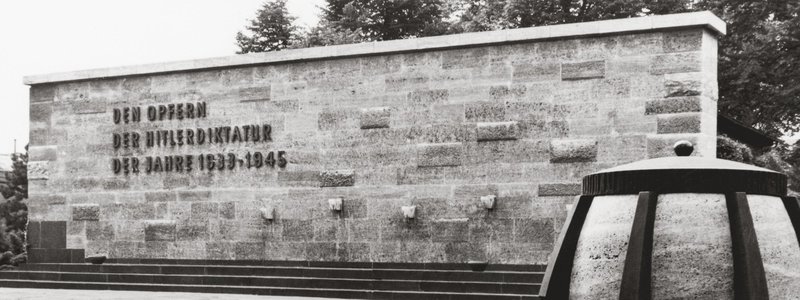Commemoration and Remembrance

Plötzensee Memorial Center is one of Berlin’s oldest sites of remembrance. The men and women murdered at the former execution site were commemorated here shortly after the war. From 1946 on there were various ideas about founding a memorial center. However, given Berlin’s division and the blockade of 1948/49, these plans were not put into practice.
In 1951 the West Berlin senate decided to set up a memorial center in Plötzensee. The foundation stone was laid on September 9, 1951, and the site was officially opened on September 14, 1952. From the very beginning, Plötzensee has been a place of commemoration and silent remembrance of all victims of the National Socialist dictatorship.
From 1954 on, the West Berlin authorities held an annual ceremony commemorating the resistance against National Socialism on July 19 or 20. Guests included relatives of those executed after the attempted coup of July 20, 1944, and federal government representatives. Today, these ceremonies are held by the federal government and the Memorial Foundation for July 20, 1944.
Other remembrance ceremonies regularly commemorate a range of other victim groups such as the members of the Red Orchestra, or take place on Germany’s National Day of Mourning, organized by the German War Graves Commission.
The memorial center was partially redesigned in 1964, including an attempt to restore the execution room to its original state, as far as possible. A small documentation of the German victims of the National Socialist dictatorship was also opened in a room adjoining the former execution site. The memorial center has been a protected monument since July 20, 1987.
The first exhibition was fundamentally revised in 1999/2000 and has since commemorated all victims of the unjust Nazi legal system murdered here, from many nations. Plötzensee Memorial Center is now a European site of remembrance.
